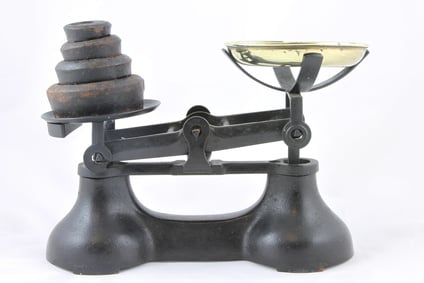The International Trade Blog Export Compliance
Understanding Units of Measure for the Automated Export System (AES) versus Export Invoices
On: January 19, 2016 | By:  Lisa Nemer |
3 min. read
Lisa Nemer |
3 min. read

Have you ever wondered why Shipping Solutions export software has three unit of measure fields and three quantity fields?
The reason is that they have different reporting purposes. One is used as a sales unit of measure on export invoices and other forms, and the other two are used for filing your Electronic Export Information through the Automated Export System (AES).
All unit of measure and quantity fields are all located on the EZ Start - Product Detail screen. The Sales Unit of Measure field is near the top of the EZ Start - Product Detail screen and is next to its corresponding Sales Quantity field (they are circled in blue below). These fields are fairly straight forward.
Whatever unit of measure you use to sell your item—whether it be pieces, pounds, boxes or something else—can be entered in the Sales Unit of Measure field. There are no restrictions other than it can be no more than 25 characters. The corresponding quantity should be entered in the Sales Quantity field.
The Sales Unit of Measure and Sales Quantity fields appear on the Canada Customs Invoice, Commercial Invoice, Korea Free Trade Agreement Certificate of Origin, and the Proforma Invoice.

The AES Unit of Measure 1 (AUOM1) and AES Unit of Measure 2 (AUOM2) fields are located in the middle of the EZ Start - Product Detail screen in the AES/EEI section (circled above in red). Their corresponding quantity fields, AES Quantity 1 and AES Quantity 2, are located right above them. These fields only appear on the Shipper’s Letter of Instruction in NCBFAA format. They are also uploaded to AESDirect if you click the AES button on the EZ Start screen.
The AUOM1 and AUOM2 fields are quite different from the Sales Unit of Measure field because the latter can be whatever you want it to be, and the former are dictated to you by the U.S. Census Bureau. You may have noticed that the AUOM1 and AUOM2 fields have drop-down lists with the choices available. You cannot type anything else in those boxes.
To determine the proper AUOM1 and AUOM2 for your product, go to the Schedule B section of the Census Bureau website. You can use either their Schedule B search tool or browse through the chapters of the Schedule B book. Once you have identified the proper Schedule B code for your product, you will see the unit of measure listed with the code.
Most items only require one unit of measure. For example, if your product has the Schedule B code 3211.00.0000, it requires kilograms as the unit of measure. Choose KG from the drop-down list in the AUOM1 field. Leave the AUOM2 field blank. However, if your product has the Schedule B code 3209.10.0000, you will see that it requires two units of measure: liters and kilograms. Choose L in the AUOM1 drop-down list and KG in the AUOM2 drop-down list.
As for the quantity fields, they must correctly correspond to the units of measure. Shipping Solutions automatically copies down the Sales Quantity field to the AES Quantity 1 field when it is first entered because if your Sales Unit of Measure and AUOM1 are both kilograms, for example, the quantity will be the same. However, if you sell this item in barrels, then you will need to enter the number of barrels in the Sales Quantity field and the weight in kilograms in the AES Quantity 1 field. Obviously, if something is measured in two different ways, the quantities will also be different. If you don’t change AES Quantity 1 before filing through AES you will be reporting the wrong quantity to the U.S. Census Bureau.
This article was first published in November 2014 and has been updated to include current information.

About the Author: Lisa Nemer
Lisa Nemer leads the customer service and finance teams at Shipping Solutions, a software company that develops and sells export document and compliance software targeted specifically at small and mid-sized U.S. companies that export. If you have ever called Shipping Solutions with a question or problem you've probably talked to Lisa! Prior to joining Shipping Solutions, Lisa spent 14 years in finance and technology-related jobs for a Fortune 500 company in Minneapolis.


